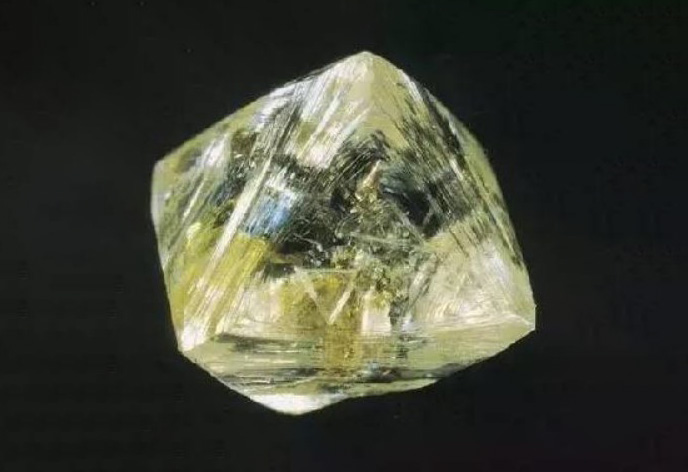The Strongest Materials On Earth

Join Eric Smith and Dr Emily Carter from Stanford Advanced Materials as they examine the ten most durable materials identified by scientific research. They assess technical performance characteristics of materials ranging from graphene to Darwin's bark spider silk and explain how these materials extend technological limits, thereby offering measurable insights for aerospace and electronics sectors.
The materials discussed in this session are:
- Graphene
- Carbon Nanotubes
- Ultra-High-Molecular-Weight Polyethylene (UHMWPE)
- Metallic Glass
- Boron Nitride Nanotubes
- Lonsdaleite
- Diamond
- Aerogel
- Silicon Carbide
- Darwin's Bark Spider Silk
This session provides detailed data and assessments for researchers interested in these materials. If you require further information, please submit an inquiry or contact us through our designated social media channels.
Welcome to Stanford Advanced Materials! I'm Eric Smith. Today, we're diving into the world of materials science to explore the ten strongest materials known to man. Joining me today is Dr. Emily Carter, an expert in materials engineering. Welcome, Dr. Carter!
Thanks for having me! Excited to be here.
Let's start with a material that's been making headlines for over a decade—Graphene. Can you tell us why it's considered so groundbreaking?
Absolutely! Graphene is incredibly thin but also unbelievably strong. It's a single layer of carbon atoms arranged in a honeycomb lattice, and despite being just one atom thick, it’s about 100 times stronger than steel.
That’s amazing! And what about its applications? Where do we see Graphene being used today or in the future?
Since the Nobel Prize in Physics was awarded for its discovery in 2010, there's been a surge in research and patents. We're looking at potential uses in electronics, energy storage, and even medical devices.
Fascinating! Moving on to another remarkable material—Carbon Nanotubes. How do they compare to Graphene?
Carbon Nanotubes are similar in that they’re also made of carbon, but they’re shaped like cylindrical tubes. They’re even stronger than steel, yet much lighter. They’re used in everything from body armor to wind turbine blades.
Speaking of lightweight, let's talk about Ultra-high Molecular Weight Polyethylene, or UHMWPE. What makes this material stand out?
UHMWPE is incredibly strong and light, much stronger than steel wire but with a fraction of the weight. It’s used in various applications, from protective gear to high-performance textiles.
That’s impressive. And what about Metallic Glass? It sounds like something out of science fiction.
Metallic Glass is fascinating because it combines the properties of metals and glass. It’s stronger than steel and doesn’t crystallize like regular metals, making it useful in aerospace and military applications.
Incredible! We also have Boron Nitride Nanotubes on our list. How do these differ from Carbon Nanotubes?
Boron Nitride Nanotubes are similar in structure but have different chemical properties. They’re even better at withstanding high temperatures and have excellent thermal and mechanical properties.
Before we wrap up, let’s touch on a few more—Lonsdaleite, Diamond, and Aerogel. How do they fit into this lineup?
Lonsdaleite is a hexagonal form of diamond, which makes it even harder than traditional diamonds. Diamonds themselves are well-known for their hardness, making them ideal for cutting tools. Aerogel, on the other hand, is incredibly light yet strong, often used for insulation and other advanced applications.
Finally, let's not forget Silicon Carbide and Darwin’s Bark Spider Silk.
Silicon Carbide is a semiconductor material with excellent thermal conductivity, used in high-performance electronics. Darwin’s Bark Spider Silk, meanwhile, is the strongest biological material we’ve ever studied—10 times stronger than kevlar!
Wow, what a lineup! Thanks, Dr. Carter, for this deep dive into the strongest materials known to man. Any final thoughts?
Just that the world of materials science is constantly evolving, and it’s exciting to see how these materials will shape the future.
Absolutely! Thanks for tuning in to Stanford Advanced Materials. If you enjoyed this episode, be sure to subscribe and leave us a review. I’m Eric Smith. Until next time!

 Bars
Bars
 Beads & Spheres
Beads & Spheres
 Bolts & Nuts
Bolts & Nuts
 Crucibles
Crucibles
 Discs
Discs
 Fibers & Fabrics
Fibers & Fabrics
 Films
Films
 Flake
Flake
 Foams
Foams
 Foil
Foil
 Granules
Granules
 Honeycombs
Honeycombs
 Ink
Ink
 Laminate
Laminate
 Lumps
Lumps
 Meshes
Meshes
 Metallised Film
Metallised Film
 Plate
Plate
 Powders
Powders
 Rod
Rod
 Sheets
Sheets
 Single Crystals
Single Crystals
 Sputtering Target
Sputtering Target
 Tubes
Tubes
 Washer
Washer
 Wires
Wires
 Converters & Calculators
Converters & Calculators
 Write for Us
Write for Us
